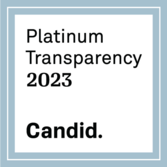Error 404 (Page Not Found)
Sorry, this page can't be found. It may be caused by:
- The page URL address entered is incorrect.
- The page has been deleted or moved.
- The page may be restricted to certain users or groups.
If you believe this is a programming error, please contact Website@CleanOceanAction.org.
Sitemap
- Home
- About COA
- COA Social Media Policy
- Events
- Year End Appeal
- Media Center
- Publications
- Newsletter
- Tip Tuesday
- Join/Donate
- Search
- About COA
- Help Your Ocean
- Rally the Waterways
- Issues & Campaigns
- Beach Sweeps
- Sites and Registration
- Photo Gallery
- Beach Sweeps FAQ
- Plan Your Own
- Annual Beach Sweeps Reports
- 2023 Beach Sweeps Report
- 2022 Beach Sweeps Report
- 2021 Beach Sweeps Report
- 2020 Beach Sweeps Report
- 2019 Beach Sweeps Report
- 2018 Annual Beach Sweeps Report
- 2017 Annual Beach Sweeps Report
- 2016 Annual Beach Sweeps Report
- 2015 Annual Beach Sweeps Report
- 2014 Annual Beach Sweeps Report
- 2013 Annual Beach Sweeps Report
- 2012 Annual Beach Sweeps Report
- 2011 Annual Beach Sweep Report
- 2010 Annual Beach Sweep Report
- 2010 Report on Citizen Action
- 2009 Annual Report
- 2008 Annual Report
- 2007 Annual Report
- 2006 Annual Report
- 2005 Annual Report
- 2004 Annual Report
- 2003 Annual Report
- Corporate Beach Sweeps
- History
- Local Legacy
- Related Stories
- Education Programs

